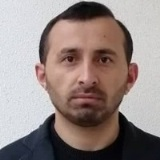Chalcogen Bonding in Crystalline and Catalyst Materials
A special issue of Crystals (ISSN 2073-4352). This special issue belongs to the section "Crystal Engineering".
Deadline for manuscript submissions: closed (10 April 2018)
Special Issue Editors
Interests: noncovalent interactions - hydrogen, halogen, chalcogen, pnictogen, tetrel and triel bonds, pi-interactions, etc.; synthesis; catalysis
Special Issues, Collections and Topics in MDPI journals
Interests: coordination chemistry; oxidation catalysis; electrocatalysis; alkane functionalization; carboxylation; C-C coupling; non-covalent interactions in synthesis
Special Issues, Collections and Topics in MDPI journals
Special Issue Information
Dear Colleagues,
Chalcogen bonding is a novel type of noncovalent interaction in which a covalently bonded chalcogen has one or more region(s) of positive electrostatic potential and acts as an electrophilic species towards a nucleophilic (negative) region(s) in another, or in the same, molecule. Directionality, strength, tunability, hydrophobicity, variable donor atom dimension and multiplicity are unique characters of the chalcogen bond, which allow the interaction to develop as a tool in the synthesis, catalysis and design of new compounds and materials. The importance of chalcogen bonding in these domains, as well as in biological systems, is well recognized and continues to increase. The goal of this forthcoming Special Issue, entitled ''Chalcogen Bonding in Crystalline and Catalyst Materials'', is intended to present an overview of the current activity in these fields.
It is our pleasure to invite you to submit a manuscript for this Special Issue; communications, regular articles, as well as reviews, are all welcome.
Dr. Kamran T. Mahmudov
Prof. Dr. Armando J. L. Pombeiro
Guest Editors
Manuscript Submission Information
Manuscripts should be submitted online at www.mdpi.com by registering and logging in to this website. Once you are registered, click here to go to the submission form. Manuscripts can be submitted until the deadline. All submissions that pass pre-check are peer-reviewed. Accepted papers will be published continuously in the journal (as soon as accepted) and will be listed together on the special issue website. Research articles, review articles as well as short communications are invited. For planned papers, a title and short abstract (about 100 words) can be sent to the Editorial Office for announcement on this website.
Submitted manuscripts should not have been published previously, nor be under consideration for publication elsewhere (except conference proceedings papers). All manuscripts are thoroughly refereed through a single-blind peer-review process. A guide for authors and other relevant information for submission of manuscripts is available on the Instructions for Authors page. Crystals is an international peer-reviewed open access monthly journal published by MDPI.
Please visit the Instructions for Authors page before submitting a manuscript. The Article Processing Charge (APC) for publication in this open access journal is 2600 CHF (Swiss Francs). Submitted papers should be well formatted and use good English. Authors may use MDPI's English editing service prior to publication or during author revisions.
Keywords
- Noncovalent interactions
- Chalcogen bonding
- Crystal engineering
- Noncovalent catalysis
- Cooperative effect






